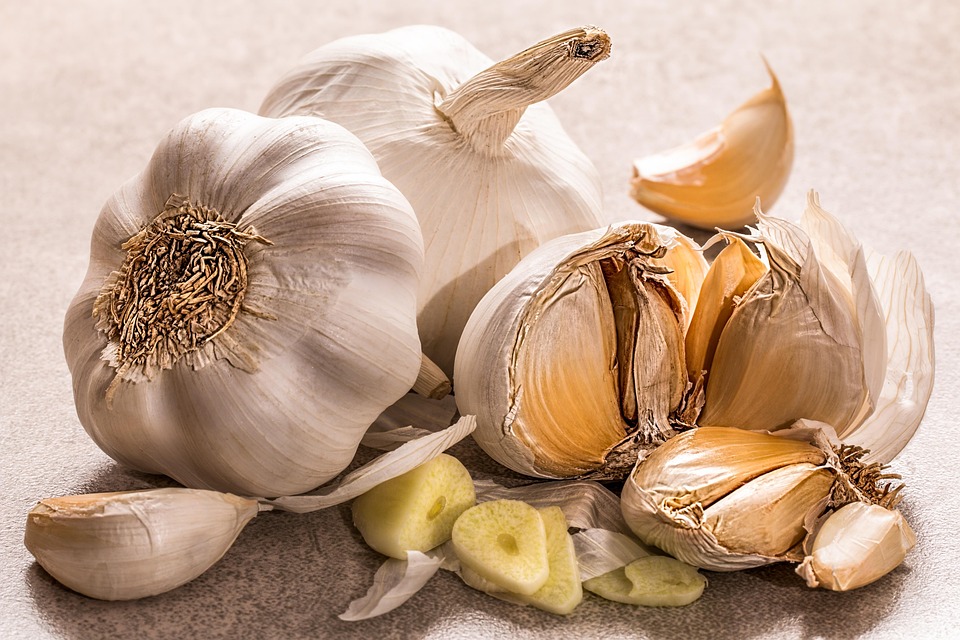7 Ways Garlic For Nerve Pain Eases Discomfort
Garlic for nerve pain is a simple, kitchen-to-care solution people reach for when tingles, burning, or numbness start to steal your calm. It’s the idea that something natural, affordable, and time-tested can ease nerve irritation and help you move through your day with less shock and strain. You want relief that feels real. You want it without extra pills, long appointments, or confusing regimens. This article shows seven clear ways garlic can help and how to use it safely, backed by science and real-world sense.
Contents
- Why Garlic For Nerve Pain Deserves Attention
- How Garlic Works On Nerves: A Plain Explanation
- 1. Garlic For Nerve Pain: Reduces Inflammation
- 2. Garlic For Nerve Pain: Improves Circulation
- 3. Garlic For Nerve Pain: Fights Oxidative Stress
- 4. Garlic For Nerve Pain: Offers Mild Analgesic Effects
- 5. Garlic For Nerve Pain: Supports Metabolic Health
- 6. Garlic For Nerve Pain: Enhances Immune Balance
- 7. Garlic For Nerve Pain: Practical, Affordable, Accessible
- How To Use Garlic For Nerve Pain Safely And Effectively
- Topical Versus Dietary: Which Is Better For Nerve Pain?
- What The Science Says About Garlic And Nerve Health
- Real People, Real Use: Stories That Sound Like Life
- When To See A Doctor
- Bottom Line
- FAQ
Why Garlic For Nerve Pain Deserves Attention
You smell garlic and you think of flavor. But garlic also carries compounds that influence inflammation, blood flow, and nerve signaling. Researchers at reputable institutions have examined garlic’s anti-inflammatory and antioxidant actions, and clinical reports suggest potential benefits for nerve-related conditions. That doesn’t mean it’s a miracle cure. It means you have a tool worth learning about—an ally that complements medical care and sensible self-care.
How Garlic Works On Nerves: A Plain Explanation
Garlic contains allicin and other sulfur compounds that reduce oxidative stress and quiet inflammation. Healthy nerves depend on stable blood flow and low inflammation. When nerves are inflamed or oxygen-starved, you feel pins, burning, or numbness. By supporting circulation and calming inflammatory pathways, garlic can reduce the triggers that worsen nerve discomfort. Scientists studying natural compounds point to these mechanisms as promising for nerve health.
1. Garlic For Nerve Pain: Reduces Inflammation
When nerves hurt, inflammation often sits at the table. Eating garlic regularly introduces anti-inflammatory compounds into your system. These compounds work like a soft sponge on inflammation, dialing down the chemicals that irritate nerve endings.
Practical tip: Add raw, minced garlic to dressings or yogurt. The enzyme that forms beneficial compounds is most active when garlic is crushed and allowed to sit for a few minutes before cooking. That tiny pause boosts potency without drama.
2. Garlic For Nerve Pain: Improves Circulation
Nerves are greedy for oxygen and nutrients. Poor circulation can starve nerves and worsen neuropathy symptoms. Garlic helps widen blood vessels and improve blood flow, which means better delivery of what nerves need to function.
Practical tip: Cooked garlic still supports circulation. Use roasted garlic mashed into vegetables, soups, or sauces. Combine it with heart-friendly olive oil for a double benefit.
3. Garlic For Nerve Pain: Fights Oxidative Stress
Oxidative stress ages tissues and damages delicate nerve fibers. Garlic’s antioxidants neutralize free radicals that chip away at nerve integrity. That action protects nerves long term and can tone down acute symptoms.
Practical tip: Balance garlic intake with antioxidant-rich foods like colorful vegetables and berries. The combination amplifies protection in a way pills alone rarely do.
4. Garlic For Nerve Pain: Offers Mild Analgesic Effects
Some people report a direct soothing sensation after topical or dietary garlic use. The compounds can interact with pain pathways, producing mild relief. It’s not the same as prescription nerve medicines, but it’s a gentle complement that many find meaningful.
Practical tip: For a topical approach, use a properly diluted garlic-infused oil rather than raw crushed garlic, which can burn skin. A teaspoon of garlic-infused oil warmed and gently applied (after a patch test) may offer comforting warmth and relief without irritation.
5. Garlic For Nerve Pain: Supports Metabolic Health
Nerve pain often tracks with metabolic stress—high blood sugar, inflammation, and poor vascular health. Garlic supports glucose regulation and cardiovascular markers, meaning it attacks two root causes at once: the metabolic environment and the nerves themselves.
Practical tip: Integrate garlic into meals rather than relying on supplements alone. Meals anchored by garlic, greens, and lean protein keep blood sugar steadier across the day.
6. Garlic For Nerve Pain: Enhances Immune Balance
An overactive or mistuned immune system can mistakenly attack nerve tissue. Garlic modulates immune responses—supporting balance rather than suppression. That’s a nuanced effect, but it matters when chronic nerve irritation has an immune component.
Practical tip: If you have autoimmune conditions, consult your clinician before making big dietary changes. Small additions of garlic usually help, but individual care matters.
7. Garlic For Nerve Pain: Practical, Affordable, Accessible
You don’t need a subscription or a rare herb to try garlic’s benefits. It’s available in supermarkets worldwide. When combined with mindful movement, sleep, and medical care, garlic becomes a practical piece of a larger healing strategy.
Practical tip: Keep a jar of roasted garlic paste in the fridge for quick, delicious additions to toast, grains, or steamed veggies.
How To Use Garlic For Nerve Pain Safely And Effectively
Start small. Add a clove of raw or cooked garlic to your meal once a day and notice how your body responds. If you tolerate it well, increase gradually. For topical use, always dilute and test on a small area of skin for 24 hours to ensure there’s no irritation.
If you’re on blood thinners or have a bleeding disorder, talk with your healthcare provider before increasing garlic intake substantially. Garlic can influence platelet function and interact with certain medications, so medical counsel matters.
Topical Versus Dietary: Which Is Better For Nerve Pain?
Dietary garlic builds systemic benefits—circulation, immune balance, antioxidant support. Topical preparations aim for localized warming or soothing effects. Both have roles. Use diet for long-term support and topical solutions for short-term comfort, always choosing gentle, diluted preparations to avoid skin damage.
What The Science Says About Garlic And Nerve Health
Several studies from university research centers and clinical journals highlight garlic’s anti-inflammatory and antioxidant properties. Clinical trials on neuropathy specifically are limited but promising, showing improved symptoms when garlic is part of a broader intervention for nerve health. That evidence supports using garlic as a complement to proven medical therapies, not a replacement.
For example, research on dietary garlic is published by nutrition and medical journals that examine cardiovascular and metabolic outcomes—factors linked to nerve health. Trusted health systems review these findings and note garlic’s potential role in supportive care for nerve conditions.
Real People, Real Use: Stories That Sound Like Life
A woman I know added garlic to her evening meals and noticed fewer night-time burning episodes within weeks. An older neighbor used diluted garlic oil after a long walk and said it helped with the deep ache in his feet. These are not clinical trials, but lived experience matters. When you pair practical use with medical oversight, you get honest results.
When To See A Doctor
If nerve pain is sudden, severe, progressive, or accompanied by weakness, loss of bladder or bowel control, or signs of infection, seek medical care right away. Garlic is a supportive tool—not a substitute for diagnosis and urgent treatment when red flags appear.
Bottom Line
Garlic for nerve pain offers real, down-to-earth benefits: anti-inflammatory action, improved circulation, antioxidant protection, and gentle analgesia. It’s affordable, accessible, and complements medical care when used thoughtfully. Start slowly, watch how your body responds, and consult your clinician when you have underlying conditions or take medications. Garlic won’t fix every case, but used as part of a sensible plan, it can ease the sting and give you more calm in your day.
You can try one small change this week—add minced garlic to a salad dressing or warm a little garlic-infused oil and massage it into sore spots after testing for sensitivity. Notice the difference. Ask your clinician about integrating dietary measures with your treatment plan. Small, steady choices add up.
FAQ
Can garlic cure neuropathy?
No. Garlic for nerve pain is supportive, not curative. It can reduce symptoms and improve contributing factors like inflammation and circulation, but it does not replace medical diagnosis or targeted treatments for neuropathy.
How should I consume garlic for best effect?
Raw crushed garlic releases beneficial compounds fastest; let it sit for a few minutes after crushing to activate those compounds. Cooked garlic still helps circulation and flavor, so use a mix of raw and roasted forms to suit taste and tolerance.
Is topical garlic safe for nerve pain?
Use caution. Raw crushed garlic can burn skin. Opt for diluted garlic-infused oils and always perform a patch test. If you notice redness, blistering, or strong irritation, stop immediately.
Can garlic interact with my medications?
Yes. Garlic can affect blood clotting and interact with some medications. If you take blood thinners or have bleeding disorders, consult your healthcare provider before increasing garlic intake.
How long before I see benefits?
Some people notice mild relief in days to weeks when garlic is added consistently to the diet. For systemic improvements like circulation and metabolic balance, expect several weeks to months alongside lifestyle changes.
References
-
The National Institutes of Health (NIH) provides information on garlic’s health effects and its bioactive compounds (http://www.ncbi.nlm.nih.gov/pmc/articles/PMC4103721/).
-
The Cleveland Clinic reviews dietary strategies for neuropathy and discusses the role of nutrition in nerve health (http://www.clevelandclinic.org/health/articles/neuropathy-nutrition).
-
Harvard Medical School summarizes research on garlic, cardiovascular health, and potential interactions with medications (http://www.health.harvard.edu/diet-and-weight-loss/garlic-and-your-health).
-
PubMed Central hosts peer-reviewed studies detailing garlic’s antioxidant and anti-inflammatory properties relevant to nerve protection (http://www.ncbi.nlm.nih.gov/pmc/articles/PMC6271342/).
-
The University of Maryland Medical Center offers practical guidance on using garlic safely, including topical preparations and possible drug interactions (http://www.umms.org/health/altmed/herb/garlic).








